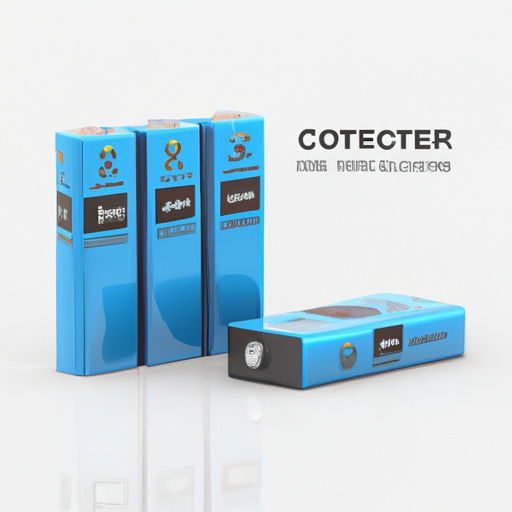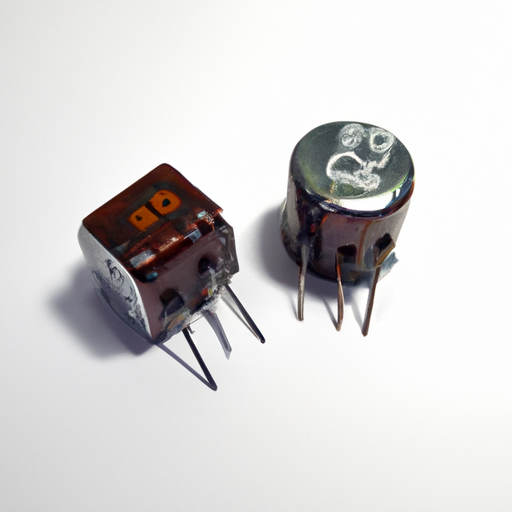What are the Mainstream Models of Capacitor Companies?
I. Introduction
Capacitors are fundamental components in the world of electronics, serving as energy storage devices that play a crucial role in various applications. They store electrical energy temporarily and release it when needed, making them essential in circuits for smoothing out voltage fluctuations, filtering signals, and providing power during brief interruptions. The capacitor industry is significant, not only for its contributions to consumer electronics but also for its role in industrial applications, automotive systems, and renewable energy technologies. This blog post will explore the mainstream models of capacitor companies, the types of capacitors they produce, and the trends shaping the industry.
II. Types of Capacitors
Capacitors come in various types, each with unique characteristics and applications. Understanding these types is essential for grasping the landscape of the capacitor industry.
A. Electrolytic Capacitors
Electrolytic capacitors are polarized components that offer high capacitance values in a relatively small package. They are typically used in power supply circuits, audio equipment, and energy storage applications. Their ability to handle high voltage and capacitance makes them ideal for filtering and smoothing out voltage fluctuations.
B. Ceramic Capacitors
Ceramic capacitors are non-polarized and are known for their stability and reliability. They are widely used in high-frequency applications, such as RF circuits, and are favored for their small size and low cost. Ceramic capacitors are commonly found in consumer electronics, telecommunications, and automotive applications.
C. Film Capacitors
Film capacitors utilize a thin plastic film as the dielectric material. They are known for their excellent performance in terms of stability, low loss, and high insulation resistance. Film capacitors are often used in audio equipment, power electronics, and applications requiring high precision.
D. Tantalum Capacitors
Tantalum capacitors are known for their high capacitance-to-volume ratio and reliability. They are often used in applications where space is limited, such as in mobile devices and medical equipment. Their stability and performance make them suitable for critical applications, although they are more expensive than other types.
E. Supercapacitors
Supercapacitors, or ultracapacitors, are energy storage devices that bridge the gap between traditional capacitors and batteries. They can store large amounts of energy and deliver it quickly, making them ideal for applications requiring rapid charge and discharge cycles, such as in electric vehicles and renewable energy systems.
III. Major Capacitor Companies
The capacitor market is dominated by several key players, each contributing to the industry with their unique offerings and innovations.
A. Overview of Leading Companies
The leading companies in the capacitor market include Murata Manufacturing, Vishay Intertechnology, KEMET Corporation, Nichicon Corporation, Panasonic Corporation, AVX Corporation, and Samsung Electro-Mechanics. Each of these companies has established a strong market position through innovation, quality, and a diverse product portfolio.
B. Company Profiles
1. Murata Manufacturing Co., Ltd.
Founded in 1944, Murata Manufacturing is a Japanese company known for its advanced electronic components, including capacitors. The company offers a wide range of capacitors, including ceramic, tantalum, and film types. Murata is recognized for its commitment to innovation and quality, making it a leader in the capacitor market.
2. Vishay Intertechnology, Inc.
Vishay Intertechnology, established in 1962, is a global leader in discrete semiconductors and passive components, including capacitors. The company offers a diverse range of capacitor types, including electrolytic, ceramic, and film capacitors. Vishay is known for its focus on high-performance products and has a strong presence in various industries, including automotive and industrial.
3. KEMET Corporation
KEMET Corporation, founded in 1919, specializes in passive electronic components, particularly capacitors. The company offers a wide range of capacitor types, including tantalum, ceramic, and film capacitors. KEMET is recognized for its commitment to sustainability and innovation, making it a preferred choice for many electronic manufacturers.
4. Nichicon Corporation
Nichicon Corporation, established in 1950, is a leading manufacturer of electrolytic capacitors. The company is known for its high-quality products and has a strong presence in the automotive and industrial sectors. Nichicon focuses on research and development to create innovative capacitor solutions.
5. Panasonic Corporation
Panasonic Corporation, a well-known multinational electronics company, produces a wide range of electronic components, including capacitors. The company offers various capacitor types, including aluminum electrolytic, film, and ceramic capacitors. Panasonic is recognized for its commitment to quality and innovation in the electronics industry.
6. AVX Corporation
AVX Corporation, founded in 1972, specializes in passive components, including capacitors. The company offers a diverse range of capacitor types, including ceramic, tantalum, and film capacitors. AVX is known for its focus on high-performance products and has a strong presence in the automotive and telecommunications sectors.
7. Samsung Electro-Mechanics
Samsung Electro-Mechanics, a subsidiary of Samsung Group, is a leading manufacturer of electronic components, including capacitors. The company offers a wide range of capacitor types, including ceramic and tantalum capacitors. Samsung Electro-Mechanics is recognized for its commitment to innovation and quality, making it a key player in the capacitor market.
IV. Market Trends and Innovations
The capacitor industry is evolving rapidly, driven by technological advancements and changing market demands.
A. Technological Advancements in Capacitor Design
Recent innovations in capacitor design have led to improved performance, reliability, and miniaturization. Manufacturers are investing in research and development to create capacitors that can handle higher voltages and capacitance values while occupying less space.
B. Shift Towards Miniaturization and Higher Capacitance
As electronic devices become smaller and more powerful, there is a growing demand for capacitors that can deliver higher capacitance in compact sizes. This trend is particularly evident in mobile devices, wearables, and IoT applications, where space is at a premium.
C. Environmental Considerations and Sustainability
Sustainability is becoming a key focus for capacitor manufacturers. Companies are exploring eco-friendly materials and production processes to reduce their environmental impact. This includes the development of capacitors that are free from harmful substances and can be recycled more easily.
D. Emerging Applications in Electric Vehicles and Renewable Energy
The rise of electric vehicles (EVs) and renewable energy technologies is creating new opportunities for capacitor manufacturers. Supercapacitors, in particular, are gaining traction in these sectors due to their ability to store and deliver energy quickly, making them ideal for applications such as regenerative braking in EVs and energy storage in solar power systems.
V. Challenges Facing Capacitor Companies
Despite the growth opportunities, capacitor companies face several challenges that could impact their operations and market position.
A. Supply Chain Issues
The global semiconductor shortage has affected the entire electronics industry, including capacitor manufacturers. Supply chain disruptions can lead to delays in production and increased costs, impacting the ability to meet customer demand.
B. Competition and Market Saturation
The capacitor market is highly competitive, with numerous players vying for market share. Companies must continuously innovate and differentiate their products to stay ahead in a saturated market.
C. Regulatory Challenges
Regulatory requirements related to environmental standards and product safety are becoming increasingly stringent. Capacitor manufacturers must ensure compliance with these regulations, which can add complexity and cost to their operations.
D. Technological Obsolescence
As technology evolves, older capacitor technologies may become obsolete. Companies must stay abreast of industry trends and invest in research and development to avoid falling behind.
VI. Future Outlook for the Capacitor Industry
The future of the capacitor industry looks promising, with several trends and developments on the horizon.
A. Predictions for Market Growth
The global capacitor market is expected to grow significantly in the coming years, driven by increasing demand for electronic devices, renewable energy solutions, and electric vehicles. Analysts predict that the market will continue to expand as technology advances and new applications emerge.
B. Potential New Entrants and Disruptive Technologies
As the market grows, new entrants may emerge, bringing innovative technologies and solutions. Disruptive technologies, such as advanced materials and manufacturing processes, could reshape the capacitor landscape and create new opportunities for growth.
C. The Role of Capacitors in Future Electronic Devices
Capacitors will continue to play a vital role in the development of future electronic devices. As the demand for high-performance, energy-efficient components increases, capacitors will be essential in enabling the next generation of technology.
VII. Conclusion
In conclusion, capacitors are indispensable components in the electronics industry, and their manufacturers play a crucial role in shaping the future of technology. The landscape of the capacitor market is dynamic, with various types of capacitors catering to diverse applications. Major companies like Murata, Vishay, KEMET, and others are at the forefront of innovation, driving advancements in capacitor design and production. As the industry faces challenges and embraces new opportunities, the future of capacitors looks bright, with continued growth and innovation on the horizon.













